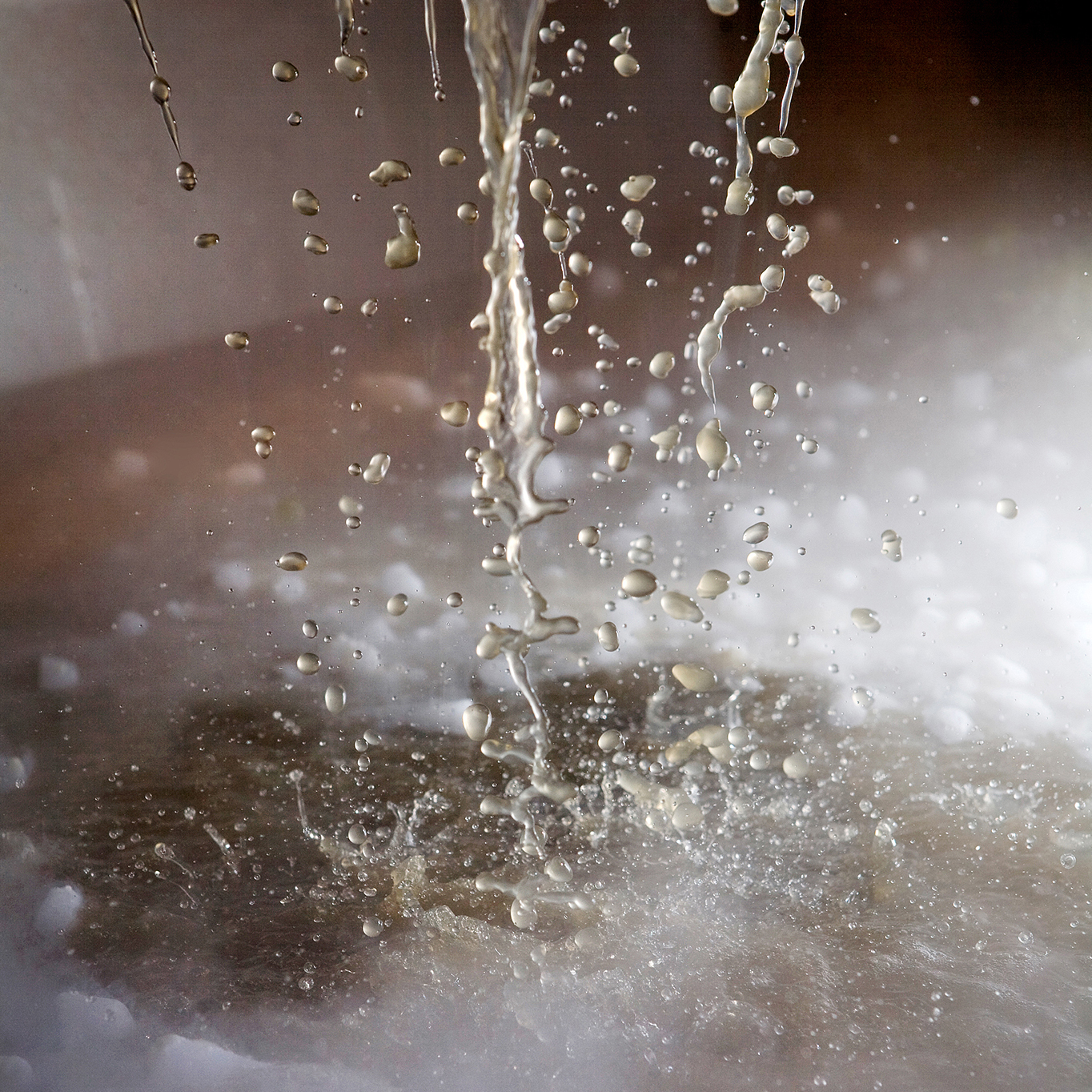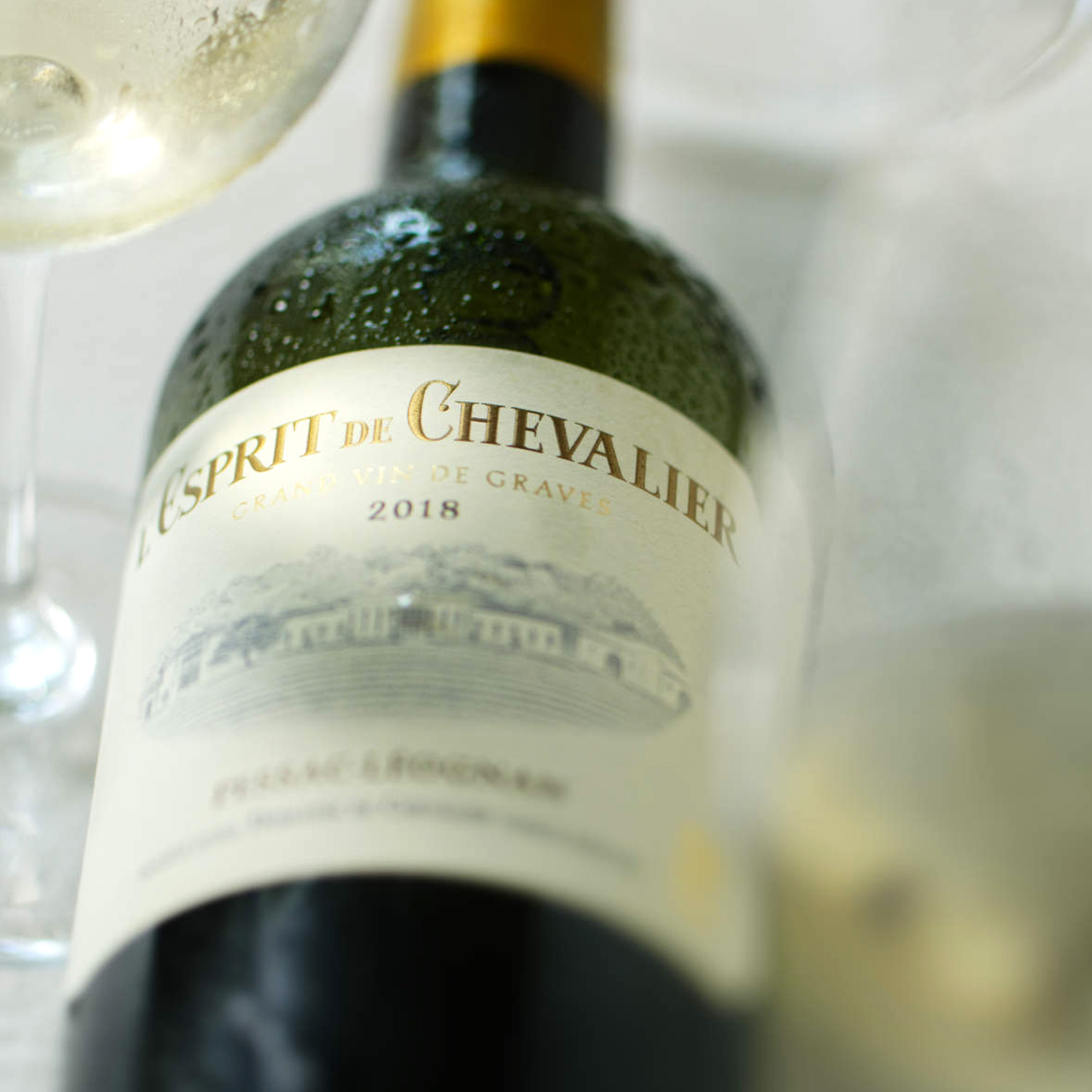
I am very attached to the concept of the ‘domaine’, the legacy of an ancient and very rich history of which I am now the custodian. The term is a reference to the origins of Chevalier and to the idea of balance that underlies all that we do, both in terms of production and way of life…
I like to think about what life on the old Domaine de Chivaley was like when it was self-sufficient. I think that something of that remains here… For my part, I decided to live on the Domaine. It’s a complete osmosis… The office phone also rings at home. It’s a state of mind, a passion. We don’t close at five o’clock…
Bernard family Continuity and going beyond

“In 1983, my family, until then specialised in the spirits trade and also Bordeaux grands crus, decided to buy Domaine de Chevalier… When I was asked to become the architect of the new regime at Chevalier, I was won over by the size of the challenge.
The message from the family was clear. The task was to continue the work started a hundred and twenty years earlier and establish a long-term approach to the heritage and quality of a product steeped in history and with a unique image. With this ambition in mind, I have been able to make numerous investments since my arrival, both in the vineyard and the cellars… I have prepared the estate for this new millennium…
The effort made since 1983 has been considerable… The vineyard, currently in full production, has been significantly expanded. Everything on the estate has been reviewed and rethought. We have cleared, built, reconfigured. Nothing has been left to chance… While the transition was undertaken with sensitivity, the overall appearance of the estate, as well as its image, have changed significantly… “
1953 The ranking
“It was under the guidance of Claude Ricard that Domaine de Chevalier joined the select group of Grands Crus Classés de Graves at the time of the 1953 classification. It was also thanks to him that it acquired its truly international dimension… We worked together for five years, which gave me an insight into the inner nature of Chevalier.”
Claude ricard Towards recognition

“When I arrived at Domaine de Chevalier in 1983, Claude Ricard had been managing it for thirty-five years. From his arrival in 1948, he decided to live on the estate. His reputation for his encyclopaedic knowledge of winegrowing was immense…”
Gabriel Beaumartin birth of the estate’s image

In reality, it was Jean Ricard’s son-in-law, Gabriel Beaumartin, who, during his forty years at Chevalier, really established the reputation of its wines.
A well-known timber merchant, he travelled abroad and spread the image of Domaine de Chevalier, which, under his aegis, gradually became worldwide.
Jean Ricard the founder

One of the original features of Chevalier is that it has taken a relatively short space of time to achieve a level of renown that most of the great growths of Bordeaux took several centuries to acquire, thanks to a limited number of owners, all of whom were keen to ensure the continuity of an approach imposing demanding high standards. It was they who really laid the foundations for the current image of Chevalier, namely that of a Grand Cru positioned at the top of the hierarchy.
“From the acquisition of the estate by Arnaud and Jean Ricard in 1865 to its purchase by my family in 1983, only three men have been at the head of Chevalier. I would say that the first, Jean Ricard, is the true creator of the estate.”
Discreet origins
The history of Chevalier is intimately linked to the presence of the surrounding forest, which for a long time occupied most of the western part of the Graves. In reality, it only really took off as a wine-producing estate in the second half of the 19th century.
You have to go back to the middle of the 17th century to find deeds mentioning the first traces of a farm in the place where the current estate is located. At that time, it belonged to the Lalanne family, founders of the estate, whose patriarch Jehan de Lalanne was called “Chivaley”, a name also given to his estate. The archives report that the farm, whose occupants were almost entirely self-sufficient, consisted of “houses, outbuildings, gardens, land, vineyards, woods and meadows”.
At the time, the term “domaine”, which was later supplanted by “château”, had a wealth of meaning that has now disappeared. As was the case at Chivaley, it designated the combination of a home, a family and a farm, where the vine was cultivated alongside livestock and food crop farming… The Lalanne family’s contract with the land of Chivaley spanned no less than two centuries before being sold in 1736 to Jean Destang, a merchant from Léognan.
Over the course of the following decades, the estate experienced varying fortunes, alternating between expansion and decline with repeated changes of ownership. After a brief improvement under the leadership of Bordeaux merchant Jean-Baptiste Dejeanne, between 1757 and 1766, the vineyard gradually fell into disuse. In 1813, the vineyards had completely disappeared, giving way to woods and moorland, only to reappear in a modest way a few years later. It was to take almost half a century before Domaine de Chevalier began to realise the full potential of its terroir.
ARCHITECTURAL
APPROACH
The progressive expansion of the vineyard, as from 1985, required the installation of suitable facilities.
The complete renovation of the buildings was carried out in two stages (1984 and 1991) on the basis of technical and aesthetic choices inspired by functional beauty and the absence of ostentation, discarding the “pseudo-classical” option from the outset. An overall package that was to be completed with a bottle cellar (2012), a concrete vat room (2013) and finally a wooden vat room (2016).
Subtly integrated, these additions have not fundamentally altered the original structure of the ensemble, which dates from the 17th century and has been largely conserved.
TRACES OF A
FORMER
FUNCTION
The facade of the central building, in particular, preserves the traces of its former function, with the double door on the first floor. In the past, this allowed the grapes to be received by gravity, a practice that has now been modernised and which we have never abandoned.
As a result, by retaining a low-rise architectural style with a simple and soothing aesthetic, its shape widening to fill the space between the vineyard and the forest, it blends in remarkably well with the site and reinforces the image of discretion and the estate’s strong countryside identity.



The highlight
of the ensemble
THE vat room
A concession to a modernity that is nevertheless timeless, the vat room, with its state-of-the-art equipment, is the highlight of the estate. Cylindrical in shape, it is a remarkably composed space that forms a break in the facade.
A walkway overlooking the vat room, integrated into the stone, metal and glass aesthetics, gives direct access to the top of the vats where a large part of the winemaking process takes place.
The volume of this functional crossroads, with its simplicity that is both uncluttered and practical, receives unlimited daylight through two vast openings on either side, one facing the park, the other facing the main courtyard, and though the overhead lighting from a glass dome, a sort of “telluric” centrepiece of the estate.






